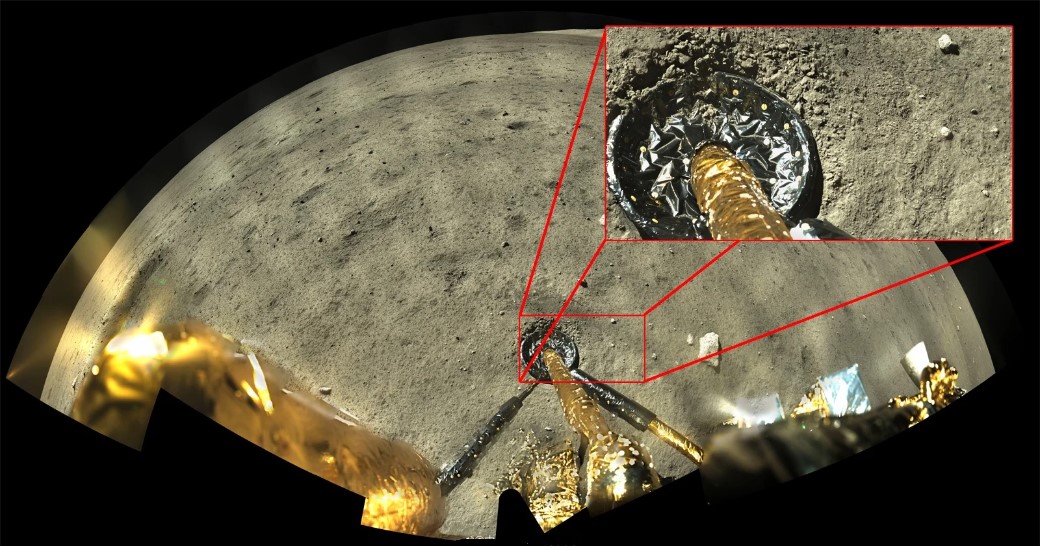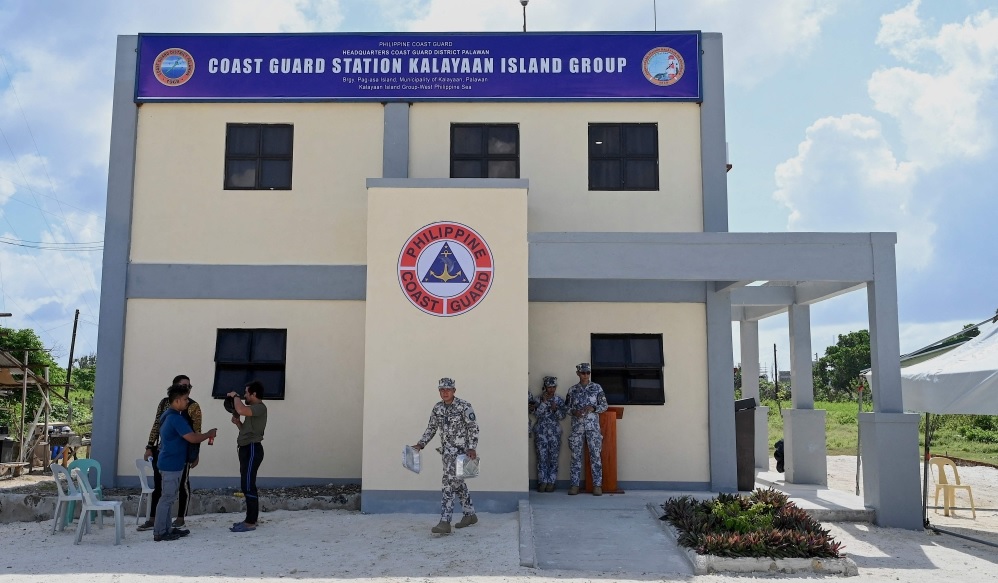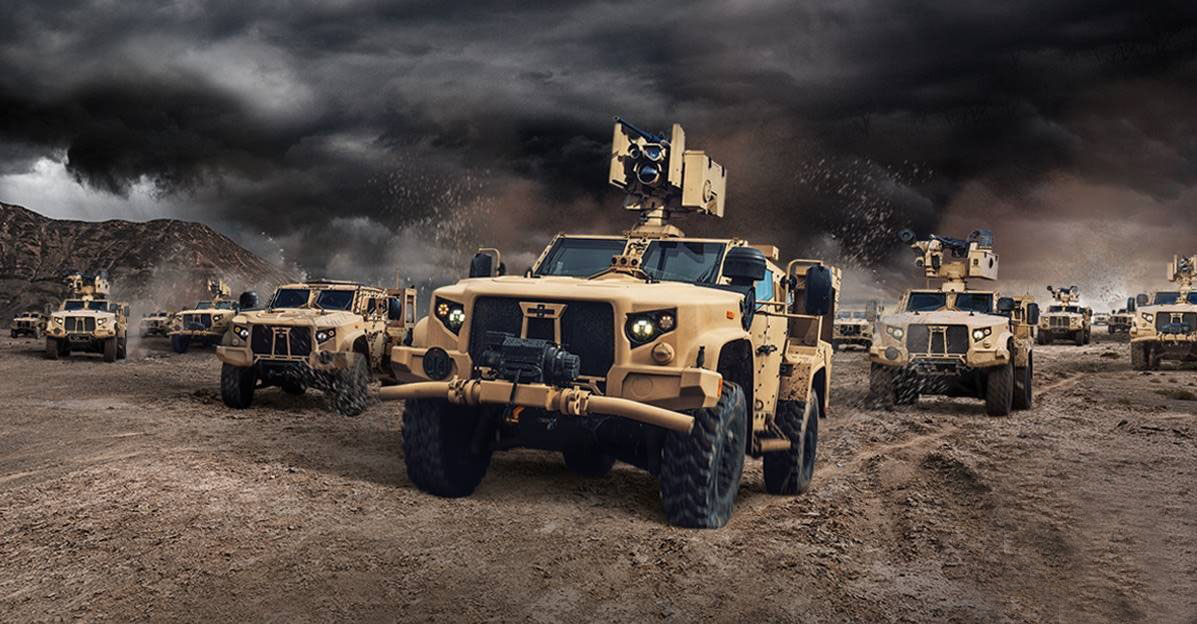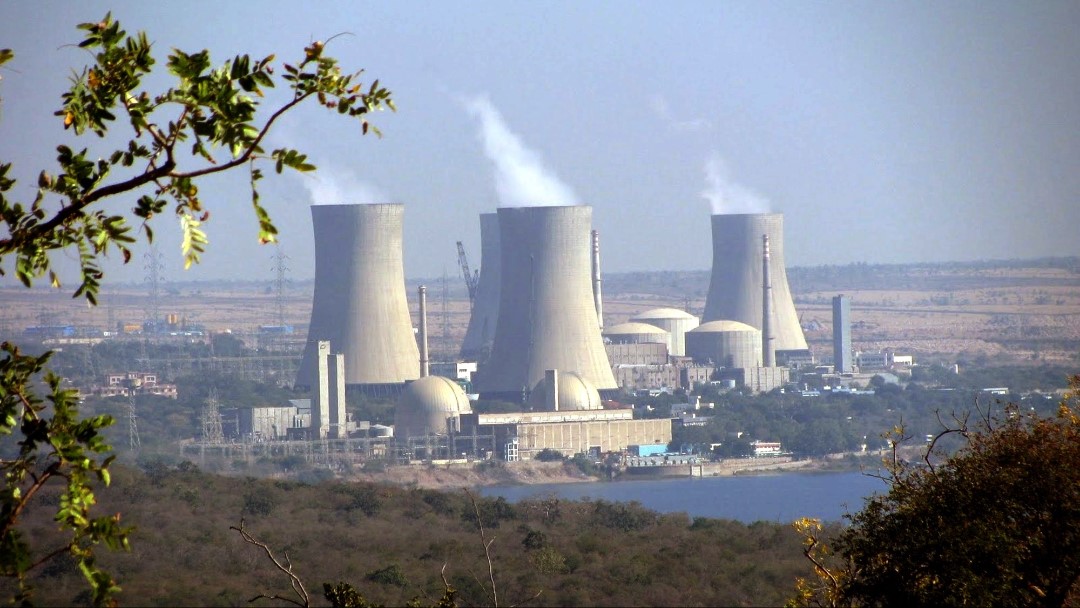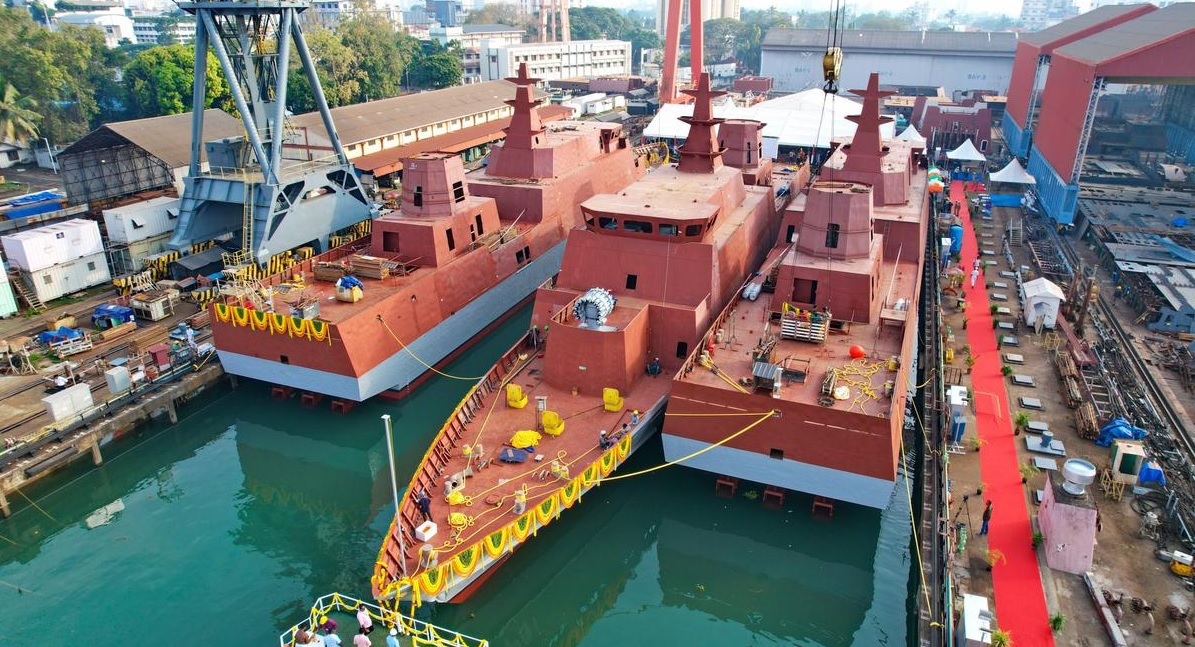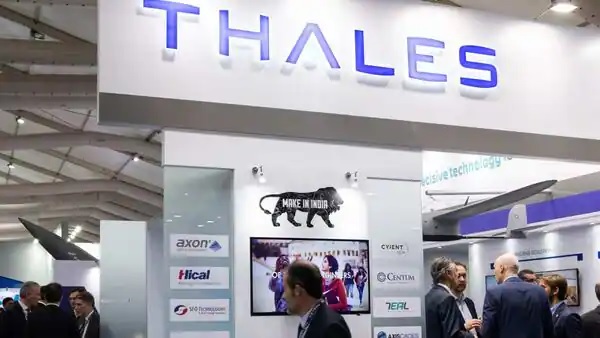Space & Technology
Researchers funded by NASA have received an extraordinary opportunity to seek access to lunar samples collected by China Chang e-5 mission. In a departure from the usual prohibition on bilateral activities, an internal email sent on Nov. 29 revealed that NASA-funded researchers could apply to the China National Space Administration (CNSA) for portions of the Chang e-5 samples.The email stated, "NASA has certified its intent to Congress to allow NASA-funded researchers to apply to the China National Space Administration for access to lunar samples returned to Earth on the Chang e-5 mission and made available recently to the international scientific community for research purposes."This unexpected move opens the door to potential collaboration between China and NASA-funded entities and researchers, contrary to NASA Administrator Bill Nelson previous strong stance against collaboration with China.The "Wolf Amendment," a provision in NASA appropriations bills, typically limits cooperation with entities of the People Republic of China. Collaboration would require prior approval from Congress and certification from the FBI, ensuring no national security risks.China Chang e-5 mission, launched in late 2020, successfully collected 1,731 grams of lunar material from Oceanus Procellarum. Initially made available to Chinese researchers, the samples were later offered to international groups in August. The samples are expected to provide new insights into the moon geological history, complementing NASA existing lunar samples.The email encourages U.S. researchers to apply for the seventh round of sample access, with the application period open until December 22, 2023. Researchers are advised to contact NASA officials for guidance if their applications are selected. However, the email emphasizes that this exception applies solely to the Chang e-5 mission samples, and the general prohibition on bilateral activity with China on NASA-funded projects remains in place.This development has been welcomed by the scientific community, with experts noting the potential for expanding lunar exploration beyond the regions covered by previous missions. James Head, a planetary scientist at Brown University, sees this as an exciting opportunity for future cooperation, possibly extending to missions like China Chang e-6 lunar farside sample return mission in 2024.While the response from CNSA to NASA applications remains uncertain, this rare exception could be a positive step toward international collaboration in space exploration, despite the historical tensions between the U.S. and China in the field.
Read More → Posted on 2023-12-02 16:39:45World
A suspected threat actor, fluent in Chinese, has been identified in a cyber campaign targeting the Uzbekistan Ministry of Foreign Affairs and South Korean users. This malicious effort, active since at least August 2023, revolves around the use of a remote access trojan (RAT) known as SugarGh0st RAT, a customized version of the infamous Gh0st RAT, also known as Farfli.The attackers employ two distinct infection methods to deliver the malware, both characterized by complex processes. Cisco Talos researchers, Ashley Shen and Chetan Raghuprasad, detailed that SugarGh0st RAT comes equipped with functionalities designed to execute remote administration tasks as directed by the command and control (C2) server, including a modified communication protocol.The assault kicks off with phishing emails housing deceptive documents. Once these documents are opened, a multi-stage procedure is triggered, leading to the deployment of SugarGh0st RAT. The deceptive documents are embedded within a heavily obfuscated JavaScript dropper, concealed within a Windows Shortcut file found in the RAR archive email attachment.Shen and Raghuprasad explained, "The JavaScript decodes and drops the embedded files into the %TEMP% folder, including a batch script, a customized DLL loader, an encrypted SugarGh0st payload, and a decoy document." Meanwhile, the batch script runs the DLL loader in the background, sideloading it with a copied version of a legitimate Windows executable, rundll32.exe, to decrypt and launch the SugarGh0st payload.A second variant of the attack employs a RAR archive containing a malicious Windows Shortcut file. This file, posing as a lure, triggers the JavaScript using DynamicWrapperX to execute shellcode, initiating the SugarGh0st RAT.SugarGh0st RAT, a 32-bit dynamic-link library (DLL) crafted in C++, establishes contact with a hard-coded command-and-control (C2) domain. This enables the transmission of system metadata to the server, facilitating actions such as launching a reverse shell and executing arbitrary commands. The malware also possesses capabilities to enumerate and terminate processes, capture screenshots, conduct file operations, and erase machine event logs, all aimed at concealing its presence and avoiding detection.The campaign connection to China is rooted in Gh0st RAT Chinese origins and its widespread adoption by Chinese threat actors. The release of its source code in 2008 further fueled its popularity. Additionally, the use of Chinese names in the "last modified by" field within the metadata of the decoy files serves as compelling evidence of the campaign ties to China.
Read More → Posted on 2023-12-02 16:33:48World
On Friday, the Philippines declared its establishment of a coast guard station on Thitu Island, the largest among the contested Spratly Islands in the South China Sea. The move aims to enhance surveillance of Chinese vessels, which have been asserting Beijing claims in the disputed waters, according to National Security Adviser Eduardo Ano.During his visit to Thitu Island, Ano disclosed that the coast guard station, equipped with advanced systems such as radar, satellite communication, coastal cameras, and vessel traffic management, has been completed and is slated to become operational in the early months of the coming year.Ano emphasized that these sophisticated systems would significantly bolster the Philippine Coast Guard (PCG) capability to monitor the movements of Chinese maritime forces, as well as those of other nations and their own public vessels and aircraft. He referred to the real-time data collection as a "game changer," anticipating its potential impact on the behavior of rival claimants, particularly China.Thitu Island, situated about 430 kilometers from Palawan, the major Philippine island, and over 900 kilometers from China nearest major landmass, Hainan island, has been a focal point in the territorial disputes.Beijing asserts dominance over most of the South China Sea, contrary to an international tribunal ruling that invalidated its claims. The Chinese government deploys vessels for patrols and has constructed artificial islands and military installations to reinforce its position.Tensions between Manila and Beijing have escalated in recent months due to various incidents in the disputed waters, including two collisions between Philippine and Chinese boats. Ano accused Chinese coast guard and other vessels of engaging in "illegal" and "aggressive" behavior towards Filipino fishermen and patrol boats, describing it as "pure bullying." Despite the challenges, Ano emphasized that the Philippines will stand its ground and not be deterred by any attempts to oppress or outmuscle the nation.
Read More → Posted on 2023-12-02 16:26:16World
In eastern Iraq, a tragic incident unfolded on Thursday evening, claiming the lives of at least 11 civilians in a blast and gunfire, according to statements from two security officials on Friday. The attack targeted a minibus transporting individuals who had attended an electoral meeting organized by a candidate from their tribe in Diyala province.An interior ministry official, requesting anonymity, revealed that the violence occurred as the minibus returned from the political gathering. The provincial governor, Muthana al-Tamimi, placed blame on jihadists, specifically pointing fingers at the Islamic State (IS) group for what he termed a "cowardly operation." Al-Tamimi urged heightened vigilance against potential dormant cells of extremists in the region through a post on his Facebook page.Despite the absence of an immediate claim from IS, Diyala remains an area where the group cells are known to be active. Following the extensive territorial losses suffered by IS in Iraq and Syria, the group officially declared the end of its self-proclaimed "caliphate" in 2017. However, sporadic attacks persist, particularly targeting military and police personnel in remote parts of central and northern Iraq.In the recent Diyala unrest, a security source in Baghdad reported that at least 11 individuals lost their lives, and 17 sustained injuries in an attack initiated by an explosive device, followed by gunfire, during the gathering in Al-Omraniya village. The minibus, returning from an electoral meeting, was reportedly struck by two homemade bombs, with sniper fire ensuing.This tragic event unfolded just days before the scheduled provincial council elections on December 18, which, in turn, contribute to the selection of governors. Iraq, striving to overcome decades of conflict, including the toppling of Saddam Hussein two decades ago, faces ongoing security challenges. Approximately 2,500 U.S. troops remain in the country as part of international efforts to prevent the resurgence of IS.A United Nations report from July indicated that IS maintains a presence with an estimated 5,000 to 7,000 members across Iraq and the Syrian Arab Republic, predominantly consisting of fighters. The incident in Diyala underscores the persistent threat posed by extremist elements, emphasizing the need for continued efforts to maintain security and stability in the region.
Read More → Posted on 2023-12-02 16:21:10Space & Technology
In response to escalating threats from North Korea, South Korea achieved a significant milestone by successfully launching its inaugural indigenous military reconnaissance satellite. According to reports from Yonhap news agency citing South Korea defense ministry, the satellite was deployed from a US military base in California using a SpaceX Falcon 9 rocket at a local time on Friday.Historically dependent on U.S. resources for high-resolution imagery, South Korea has been actively pursuing the establishment of an autonomous military satellite network to enhance its intelligence capabilities concerning North Korea. The move marks a shift from reliance on American assets to an independent approach in gathering crucial information.The initial deployment involves an electro-optical and infrared (EO/IR) satellite, with plans to launch four additional synthetic aperture radar (SAR) satellites into orbit by 2025, aiming to bolster the monitoring capabilities directed towards North Korea. EO/IR satellites provide detailed Earth surface imagery but are limited by cloud cover, while SAR satellites can acquire data under various weather conditions through remote sensing systems.This strategic initiative is anticipated to intensify the space competition between the two Koreas, particularly as North Korea recently placed its first spy satellite into orbit on November 21. Despite two earlier unsuccessful attempts, North Korea has expressed its commitment to launching more satellites within a short timeframe.Military officials, as reported by Yonhap news agency, are optimistic about the reconnaissance satellites playing a pivotal role as the "eyes" for South Korea Kill Chain preemptive strike system. These satellites are expected to facilitate swift detection and early warning capabilities in response to potential nuclear or missile threats from North Korea.The Kill Chain system represents a fundamental component of South Korea comprehensive deterrence strategy, complemented by the Korea Air and Missile Defense system and the Korea Massive Punishment and Retaliation plan. Together, these elements form a robust defense framework, emphasizing the nation preparedness in the event of a major conflict.
Read More → Posted on 2023-12-02 15:52:44World
Oshkosh Defense has secured a lifeline for its production line, thanks to a recent order from Israel for Joint Light Tactical Vehicles (JLTVs). The Wisconsin-based company had initially planned to close its JLTV production line by the end of 2024, following the Army decision to have AM General take over the production of the Humvee replacement. However, the Israeli Ministry of Defense recent order for 75 JLTVs through a foreign military sale, along with additional units through a direct commercial sale, has extended Oshkosh production line into 2025.In 2015, Oshkosh emerged victorious in the bid for the original JLTV contract, outperforming competitors like Humvee-maker AM General and Lockheed Martin. The recent Israeli order, coupled with a $208 million order for more U.S. Army JLTVs in November and a $160 million order from various countries, has provided a significant boost to Oshkosh production plans.The specific number of JLTVs involved in the commercial sale to Israel has not been disclosed by Oshkosh. Tim Bleck, President of Oshkosh Defense, expressed enthusiasm about the ongoing partnership with the Israeli Ministry of Defense, highlighting the company decade-long collaboration with the IMOD on various programs.Despite initial plans to wind down the JLTV production line in 2024, the influx of new orders has prompted Oshkosh to extend its production capabilities into 2025, ensuring continued manufacturing of these critical military vehicles. In addition to Israel, Oshkosh JLTVs have found favor with other foreign customers, including Montenegro, Brazil, Lithuania, and Belgium. This sustained international demand reflects the global significance of Oshkosh Joint Light Tactical Vehicles in modern military fleets.
Read More → Posted on 2023-12-02 15:32:39India
India stands on the brink of eradicating Maoist extremism, according to Union Home Minister Amit Shah. Addressing Border Security Force (BSF) troopers on the occasion of the paramilitary force 59th Raising Day celebrations, Shah emphasized the government unwavering determination to triumph in this struggle.Over the past decade, Shah revealed a significant decline in Maoist violence, citing a 52% reduction in incidents, a 70% decrease in related fatalities, and a decrease in affected districts from 96 to 45. The number of police stations impacted by left-wing extremism dropped from 495 to 176, marking substantial progress in curbing the insurgency."The ongoing operation against left-wing extremism by forces such as the BSF, CRPF, and ITBP is underway. Our commitment to eliminating Maoist extremism in the country is resolute," declared the home minister.Highlighting advancements in states like Jharkhand, Shah underscored recent successful operations in "Burapahar" and "Chakarbandha," which liberated extensive territories from Maoist control. Expressing confidence in victory, Shah disclosed the establishment of 199 new security force camps in affected areas since 2019.Looking back on the Modi government decade-long tenure, Shah commended achievements in resolving hotspots in Jammu and Kashmir, addressing left-wing extremism, and countering insurgency in the Northeast. He asserted that security forces have successfully asserted their dominance in Jammu and Kashmir.
Read More → Posted on 2023-12-02 15:26:41India
On Friday, Union Home Minister Amit Shah expressed confidence that India critical borders with Pakistan and Bangladesh will be fully secured within the next two years. Speaking during the Border Security Force (BSF) 59th Raising Day celebrations, Shah acknowledged the ongoing efforts to address gaps in approximately 60 km of the border stretch along these two fronts.Highlighting the achievements of the Narendra Modi government, Shah stated that, over the past nine years, approximately 560 km of the India-Pakistan and India-Bangladesh borders have been fenced and gaps have been sealed. The remaining work on about 60 km is underway, and Shah affirmed the commitment to completely secure both borders in the coming two years.The challenging terrains of these borders, spanning 2,290 km with Pakistan and 4,096 km with Bangladesh, include long riverine, mountainous, and marshy areas, making the erection of fences difficult. To address this, the BSF and other agencies employ technical gadgets for infiltration checks.Shah emphasized the importance of border security for a country development and prosperity. He credited the government, led by Prime Minister Narendra Modi, for achievements such as the Chandrayaan mission, G20 Summit participation, and elevating the economy from the 11th to the fifth spot, attributing these successes to the dedication of forces like the BSF.Addressing BSF personnel at the "Meru" training camp, Shah praised their role as the essential pillar in the country journey. He underscored the role of BSF jawans, stating that the border fence, while crucial, is complemented by the bravery and dedication of the personnel.The BSF, established on December 1, 1965, with a strength of about 2.65 lakh personnel, guards the over 6,386 km-long Indian fronts with Pakistan and Bangladesh.Shah reiterated the BJP government consistent prioritization of border security, spanning from the tenure of former PM A B Vajpayee to the present Modi government. He highlighted the integrated approach adopted by Vajpayee government and the Modi government emphasis on security, development, democratic processes, infrastructure, and welfare measures for the local population on the border.In the context of Left Wing Extremism (LWE), Shah conveyed optimism about nearing the elimination of the armed and violent movement led by Maoist cadres. Over the last decade, incidents of Naxal violence decreased by 52%, deaths in these incidents by 70%, and affected police stations from 495 to 176.Shah emphasized the ongoing efforts against LWE, with forces like the BSF, CRPF, and ITBP actively engaged. He expressed determination to end Naxalism in the country and highlighted the establishment of 199 new security forces camps in LWE-affected areas over the last decade.In conclusion, Shah commended the accomplishments of the Modi government in addressing hotspots such as Jammu and Kashmir, LWE, and insurgency in the northeast. He asserted that security forces have successfully established their dominance in Jammu and Kashmir over the past ten years.
Read More → Posted on 2023-12-02 15:21:49Space & Technology
NASA ambitious Artemis lunar exploration initiative is likely to face a setback, with the first crewed landing expected no earlier than 2027, according to a recent report from the Government Accountability Office (GAO).Released on November 30, the GAO report highlights the sluggish progress on key components of the Artemis program, particularly the Human Landing System (HLS) lunar lander developed by SpaceX and the new lunar spacesuits by Axiom Space. The current target of achieving a crewed landing in late 2025 on the Artemis 3 mission appears unattainable, primarily due to challenges in HLS development.The report underscores SpaceX hurdles, stating that the company "is facing multiple issues that limit this progress and jeopardize its ability to support an Artemis III mission in 2025." These challenges include an ambitious schedule, delays in the current development, and significant technical work.The GAO argues that considering the typical timeline for major projects at NASA, it was unrealistic to expect the Starship lunar lander to be ready by late 2025. "If the HLS development takes as many months as NASA major projects do, on average, the Artemis III mission would likely occur in early 2027," the report notes.SpaceX HLS development is reportedly progressing more slowly than anticipated, with the preliminary design review milestone taking more than half the overall schedule. The report cites SpaceX delays of unspecified key events from 2023 to 2024, compressing the remaining timeline.The GAO report also points to an "incomplete" first integrated test flight of Starship/Super Heavy in April, raising concerns about key technical milestones, including the performance of the Raptor engine and in-space cryogenic propellant transfer.While NASA received an updated schedule for Starship HLS development from SpaceX in August, the details remain undisclosed. NASA officials emphasized ongoing collaboration with SpaceX, stating that the lander integration with the broader program is critical.In addition to SpaceX challenges, the GAO report highlights potential delays in Axiom development of lunar spacesuits. Axiom is still in the early stages of suit development, with a preliminary design review scheduled for November. As of the report date, neither NASA nor Axiom had reported the completion of that review.Axiom plan to redesign portions of the suit based on NASA earlier design to meet agency requirements for 60 minutes of emergency life support capabilities could potentially impede overall spacesuit development. The GAO warns of potential delays, including supply chain challenges with critical components having lead times of 12 to 18 months.
Read More → Posted on 2023-12-01 17:11:48India
On Thursday, India marked a significant achievement in its nuclear energy endeavors as the third indigenous 700 MW nuclear power reactor, under construction at Rawatbhata in Rajasthan, completed the hot conditioning of its primary heat transport system, according to the Nuclear Power Corporation of India Limited (NPCIL). The reactor, known as Unit-7 of the Rajasthan Atomic Power Project (RAPP) 7&8, is a pivotal component of the 700 MW series and has now progressed towards further commissioning activities such as Initial Fuel Loading (IFL), First Approach to Criticality (FAC), and the eventual commencement of electricity generation.RAPP-7 represents the inaugural unit of the RAPP 7&8 (2X700 MW) project underway in Rawatbhata, with its counterpart, RAPP-8, also advancing in construction. The achievement follows the operational commencement of India first indigenous 700 MW Pressurised Heavy Water Reactor (KAPS-3) at the Kakrapar Atomic Power Station in Gujarat on June 30. The accompanying unit, KAPS-4, is in an advanced stage of construction, having completed Initial Fuel Loading in October.The NPCIL is actively engaged in the construction of sixteen 700 MW Pressurised Heavy Water Reactors (PHWRs) across the country, having received both financial and administrative approval for the ambitious initiative. Concurrently, the development of 700 MW nuclear power plants is underway at Kakrapar (KAPS-4), Rawatbhata in Rajasthan (RAPS 7&8), and Gorakhpur in Haryana (GHAVP 1&2). The government has further sanctioned the construction of 10 indigenously developed PHWRs in fleet mode at four strategic locations: Gorakhpur in Haryana, Chutka in Madhya Pradesh, Mahi Banswara in Rajasthan, and Kaiga in Karnataka.Providing an update on nuclear power plants in collaboration with Russia at Kudankulam in Tamil Nadu, the NPCIL announced the completion of concreting for the inner containment dome of reactor building-3 of the KKNPP-3 unit, boasting a capacity of 1,000 MW. Additionally, a significant shipment comprising project cargo for KKNPP-3&4 and KKNPP-5&6, totaling approximately 700 FRT and 590 FRT respectively, departed from Russia St Petersburg port on October 10. The Kudankulam nuclear power project encompasses six units, each with a capacity of 1,000 MW, of which two have already been commissioned.
Read More → Posted on 2023-12-01 17:06:23World
World leaders, including Prime Minister Narendra Modi, convened in Dubai for the COP28 World Climate Action summit, kicking off with the traditional "family photograph" on Friday.Prime Minister Modi engaged in discussions with various global leaders, including Italian Prime Minister Giorgia Meloni and European Union President Ursula von der Leyen. The event also saw the presence of Britain King Charles-III, who joined the leaders in the symbolic family photo.Upon his arrival, PM Modi was welcomed by UAE President Sheikh Mohammed bin Zayed Al Nahyan and United Nations Secretary-General Antonio Guterres. The leaders shared warm interactions and posed for a photograph together.During his 21-hour stay in Dubai, PM Modi is set to have seven bilateral meetings, deliver four speeches, and participate in two special climate initiatives, according to officials. He is scheduled to address the opening session of the World Climate Action Summit, the High-Level Segment of the 28th Conference of Parties (COP28) to the United Nations Framework Convention on Climate Change (UNFCCC).Additionally, Prime Minister Modi will attend sessions on transforming climate finance and the Green Credits Programme, co-hosted by India and UAE. He will also participate in the Leadership Group for Industry Transition (LeadIT) Event, co-hosted by India and Sweden.In an interview with UAE-based newspaper Aletihad, PM Modi emphasized that climate change is a global challenge requiring a unified response. He highlighted the importance of global cooperation to ensure climate financing and technology transfer, particularly for developing countries that have not contributed significantly to the problem.Emphasizing the principles of equity, climate justice, shared obligations, and capacities, PM Modi stressed the need for climate action that respects the development priorities of the Global South.This marks PM Modi third appearance at the World Climate Action Summit, following his participation in Paris in 2015 and Glasgow in 2021.On the opening day of COP28, the UAE supported a crucial decision to operationalize the loss and damage fund for developing nations. The fund aims to provide financial assistance to countries recovering from climate disasters and address other climate-related emergencies.COP28, under the Presidency of the UAE, is scheduled from November 28 to December 12. The conference provides a unique platform for world leaders to build momentum for collective action against the shared challenge of climate change.
Read More → Posted on 2023-12-01 16:59:45India
On a bright Thursday morning, the Cochin Shipyard marked a significant milestone with the simultaneous launch of the first three out of eight Anti-Submarine Warfare (ASW) shallow water crafts destined for the Indian Navy. This event unfolded on November 30 at the shipyard premises.The vessels, set to be named INS Mahe, INS Malvan, and INS Mangrol upon commissioning, were inaugurated in the distinguished presence of Vice Chief of Naval Staff Vice Admiral Sanjay J. Singh, Commander in Chief of Strategic Forces Command Vice Admiral Suraj Berry, and Commandant of Indian Naval Academy Vice Admiral Puneet Bahl. The launch ceremony was graced by their spouses Anjali Bahl, Kangana Berry, and Zarine Lord Singh.In 2019, the Cochin Shipyard entered into a contract with the Ministry of Defence to construct a total of eight ASW vessels, known as the Mahe class. These cutting-edge ships are designed to replace the Navy existing Abhay class ASW corvettes and are tailored for anti-submarine operations in coastal waters, low-intensity maritime scenarios, mine laying, and sub-surface surveillance operations. Furthermore, they demonstrate proficiency in coordinated ASW operations with aircraft and contribute to search and rescue missions.The vessels boast an impressive array of capabilities, including lightweight torpedoes, ASW rockets and mines, a close-in weapon system (30 mm gun), and 12.7 mm stabilised remote control guns. Measuring 78 meters in length, 11.36 meters in width, with a draught of 2.7 meters, a displacement of 896 tonnes, and a speed potential of up to 25 knots (approximately 45 kmph), these vessels exhibit a remarkable endurance of 1,800 nautical miles. Additionally, they are equipped with indigenously-developed sonars for underwater surveillance and have a crew capacity of 57 personnel, including seven naval officers.The construction methodology employed at the shipyard follows an integrated hull outfit and painting approach, adhering to naval requirements. Vice Admiral Sanjay J. Singh emphasized the robust ship-building system in India, attributing it to efforts in indigenization and self-reliance, underscoring the nation growing naval prowess.Madhu S. Nair, the CMD of the shipyard, highlighted the launch significance, especially coming shortly after the delivery of the indigenous aircraft carrier INS Vikrant from the same yard. Despite challenges posed by the pandemic, forex variations, and the conflict in Ukraine, the three warships were delivered within the specified price limit, reflecting the shipyard commitment to excellence in the face of adversity.
Read More → Posted on 2023-12-01 16:54:06India
Prime Minister Narendra Modi touched down in Dubai on Thursday night, marking the commencement of his attendance at the 28th Conference of the Parties (COP28) Summit. The highlight of his agenda is participation in the World Climate Action Summit, a key event scheduled for December 1.Upon his arrival at Dubai airport, a spirited Indian diaspora, gathered outside a hotel, welcomed him with renditions of "Saare Jahan Se Achha" and enthusiastic chants of "Bharat Mata Ki Jai" and "Vande Mataram".Expressing his anticipation for the summit, PM Modi took to his social media platform X, affirming his commitment to the cause of creating a more sustainable planet. He shared, "Landed in Dubai to take part in the COP-28 Summit. Looking forward to the proceedings of the Summit, which are aimed at creating a better planet."The Prime Minister is set to address the opening session of the World Climate Action Summit in the United Arab Emirates, participating in three high-level side events, two of which will be co-hosted by India. The Ministry of External Affairs spokesperson shared a video message on X, offering insights into the action-packed agenda planned for the following day.Highlighting the significance of the World Climate Action Summit as the high-level segment of COP28, the spokesperson mentioned that the day would commence with the prime minister address. Additionally, PM Modi will participate in a special event hosted by the UAE on transforming climate finance and co-host an event with the UAE focusing on green credits—an initiative close to the Prime Minister heart.During the day, a substantial number of bilateral engagements are expected to take place, fostering collaboration and dialogue among participating nations.In a departure statement preceding the COP28 climate talks, PM Modi underscored the concrete steps on climate action and sustainable development outlined in the G20 New Delhi Leaders Declaration.The visit to Dubai was extended courtesy of an invitation from the President of the UAE and Ruler of Abu Dhabi, Sheikh Mohamed bin Zayed Al Nahyan. Expressing his satisfaction with the UAE role as a crucial partner for India in climate action, PM Modi stated, "I am travelling to Dubai to attend the World Climate Action Summit of the COP-28 on December 1, 2023."COP28, signifying the 28th meeting of the Conference of the Parties to the United Nations Framework Convention on Climate Change (UNFCCC), is scheduled to unfold in Dubai, UAE, spanning from November 30 to December 12. The summit will convene delegates from nearly 200 nations, with prominent leaders, including Prime Minister Narendra Modi, contributing to the global discourse on climate action.
Read More → Posted on 2023-12-01 16:48:39India
The National Investigation Agency (NIA) has formally charged eight individuals in Telangana for their alleged involvement in supplying explosives, drones, and other equipment to the banned Communist Party of India (Maoist), with the intent to carry out attacks against security forces in Maoist-affected regions of the country. According to an official statement, all eight accused are currently in custody after being arrested under various sections of the Indian Penal Code, Telangana Public Security Act, Explosive Substances Act, and Unlawful Activities (Prevention) Act.The chargesheet reveals that three of the accused, functioning as couriers for the proscribed outfit, were apprehended while en route to deliver explosives, drones, and a lathe machine. The remaining suspects were subsequently captured, as confirmed by a spokesperson from the federal agency. Investigations indicate that the explosive materials found in the possession of the three arrested individuals—Punem Nageswar Rao, Devanuri Mallikarjun Rao, and Vollepogula Umashankar—originated from Jannu Koti, Arepalli Srikanth, Tallapalli Arogyam, and Bontha Mahender.The latter group had obtained the supplies from Sonaboina Kumaraswamy, a person licensed for dealing in explosives, the spokesperson added. The probe further uncovered that the courier trio had acquired and supplied a drilling machine to the Maoists in March, followed by the purchase of a lathe machine in May intended for delivery to the Communist Party of India (Maoist). The accused individuals also procured a drone in May, aimed at spying on the activities of security forces within forested areas.The official disclosed that these individuals received explosive materials from their co-accused, with the intention of conducting violent attacks against security forces. The cache seized at the time of their arrest was reportedly intended for manufacturing country-made arms to be deployed against security forces in Maoist-affected regions of India.The case, initially registered at Cherla police station in Telangana on June 5, was taken over by the NIA on August 3. The spokesperson concluded by stating that ongoing investigations are focused on exposing and dismantling the anti-India designs of the CPI (Maoist) outfit.
Read More → Posted on 2023-12-01 16:40:32India
Following the Men Agniveer Rallies on November 25, the spotlight shifted to the Women rallies on November 27, where the AMC (Army Medical Corps) Stadium saw a vibrant display of physical prowess. In the midst of the early-morning winter fog, hundreds of young girls gathered to showcase their fitness and abilities.While some dedicated months to prepare for the recruitment rally, others sought employment opportunities for the next four years. Some were driven by aspirations of pursuing athletic careers, while others aimed to carry forward family legacies. The Agniveer rallies, under the Agnipath scheme launched in 2022, have been instrumental in inducting numerous young men and women into the Indian Army, primarily in initial roles below officer level positions.Aspirations ranging from athletic dreams to family legacies motivated girls to join the Agniveer field. Kriti Ray from Lucknow, aiming to fulfill her father incomplete tenure in the Corps of Military Police, expressed her determination to complete what her father started. With a surprise announcement awaiting her father, she eagerly shared her commitment to passing the recruitment rally.In contrast, Khushi, a farmer daughter from Rae Bareilly, joined the army with aspirations of becoming a sportsperson under the Indian Army banner. Inspired by her brother success in the previous Agniveer selection, Khushi emphasized the equality within her family, stating that if her brother could achieve it, so could she.A national-level athlete from Uttarakhand, who completed a 1.6-kilometer running race in an impressive 6 minutes 50 seconds, shared her excitement about surprising her father with the news. Coming from an army family, with her father as a retiree and brother currently serving, she expressed her long-standing dream of serving the country. Having missed the rally last year due to national competition preparations, she returned triumphantly this year, eager to share the news with her family.Enduring physical tests such as running races, a 10-feet long jump, high jumps, and medical examinations, the girls patiently awaited their turn to showcase their sporting abilities. Their dream of serving the country through early enlistment in the army reflected their unwavering determination on the field. Upon qualification, they will assume beginner roles in the Women Military Police, marking the beginning of their fulfilling journeys in service to the nation.
Read More → Posted on 2023-12-01 16:35:16India
On Tuesday, the Ministry of Defence (MoD) sealed a deal with Bharat Heavy Electricals Ltd (BHEL) for the acquisition of 16 upgraded Super Rapid Gun Mounts (SRGMs) along with associated accessories. The contract, valued at Rs 2,956 crore, marks a significant step in bolstering the Indian Navy combat capabilities.The state-of-the-art 76mm/62 Calibre SRGMs are renowned for their rapid fire rate and high precision, making them formidable medium-calibre defence systems capable of anti-missile and anti-aircraft actions. The MoD emphasized the versatility of these upgraded systems, which will be strategically installed on both existing and future Indian Navy ships.Providing a detailed breakdown of the agreement, the MoD disclosed that the contract with BHEL, Haridwar, falls under the Buy (Indian) category. It encompasses the production of 16 Upgraded SRGMs, inclusive of essential equipment and accessories, at a total cost of Rs 2,956.89 crore. The manufacturing of these cutting-edge systems will take place at BHEL Haridwar Plant.Highlighting the effectiveness of the SRGMs, the ministry underscored their capacity to engage multiple threats simultaneously, showcasing exceptional performance against missiles and fast-moving attack crafts. The deployment of these advanced defence systems is not limited to existing naval vessels but will extend to newly constructed ones as well.The ambitious project is expected to generate approximately two and a half lakh man-days of employment over a span of five years. It is also anticipated to involve a diverse array of Indian industries, including Micro, Small, and Medium Enterprises (MSMEs), contributing significantly to the government "Atmanirbharta" or self-reliance initiative in the realm of defence. This contract reflects the nation commitment to enhancing its indigenous defence capabilities and fostering economic growth through strategic partnerships within the country.
Read More → Posted on 2023-12-01 16:29:23Space & Technology
Kayrros, a French provider of satellite imagery analysis, has unveiled a complimentary version of its global methane tracking map on November 29. The aim is to empower the public in holding governments and businesses accountable for their emissions. Leveraging data from the European Space Agency Sentinel-5P satellite and the International Space Station sensor, the platform delivers daily snapshots of methane, a significant contributor to global warming.The map identifies 5,645 methane super-emitters globally, characterized by a notably higher emission rate. Of these, 3,320 are linked to oil and gas, 874 to coal, and 1,451 to waste and agriculture. Notably, the Amman landfill in Jordan is flagged as a major emitter, producing an amount of greenhouse gas equivalent to 450,000 cars annually, despite European Union investments for improved gas capture and electricity generation.Kayrros advocates for an outright ban on super-emitters, asserting that swift reductions in methane emissions from fossil fuels alone could match the impact of removing all cars and trucks from the roads. Addressing major methane emissions is posited as a relatively straightforward method to combat climate change, according to Antoine Rostand, Kayrros president and co-founder.The release of the methane map coincides with the upcoming United Nations Climate Change Conference, COP28, taking place in Dubai between Nov. 30 and Dec. 12. Rostand emphasizes the heightened public awareness and interest in methane reduction, aligning with COP28 focus on the issue.Kayrros also provides access to satellite data through commercial agreements, offering more detailed analyses in paid studies focusing on countries, cities, and individual fields. The United Nations Environment Program International Methane Emissions Observatory is among the entities utilizing Kayrros satellite imagery analysis.Satellite-based tracking of greenhouse gas emissions, involving companies like Canada GHGSat, is seen as a tool to enable scrutiny by institutions, businesses, and investors of emissions reporting. This aligns with the trend of businesses voluntarily disclosing emissions as part of environmental, social, and governance (ESG) disclosures, aiming to attract investors and customers.The public availability of Kayrros methane tracking map is positioned to support efforts in verifying these reports, addressing concerns of greenwashing that have hindered the progress of the ESG movement. Bogdan Gogulan, CEO of NewSpace Capital, a private equity firm and investor in Kayrros, urges diplomats at COP28 to showcase how empirical data will be utilized to drive growth, investment, and financial instruments supporting climate and sustainability technologies. Gogulan emphasizes the importance of precise, traceable, and auditable data for effective climate action, fostering accountability and responsibility. Investors are keenly interested in actionable outcomes from COP28, particularly in the realm of ESG, according to Gogulan.
Read More → Posted on 2023-11-30 17:26:56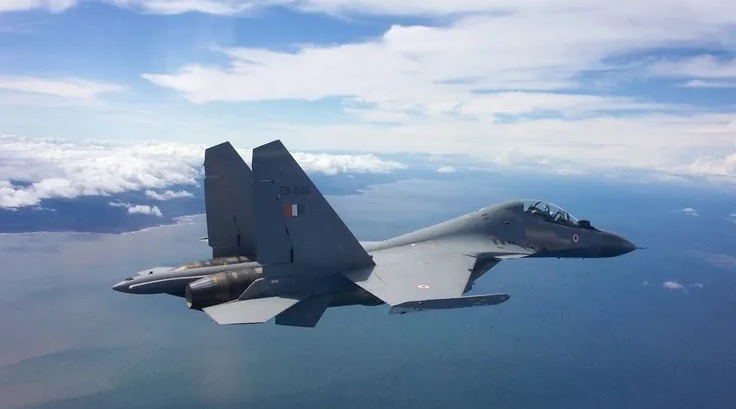
Indian Air Force Advances: Su-30 MKI Upgrade with Indigenous Technologies and Strategic Partnerships
India
The Defence Acquisition Council (DAC), under the leadership of Defence Minister Rajnath Singh, has approved the Acceptance of Necessity (AoN) for the indigenous upgrade of Su-30 MKI Aircraft by Hindustan Aeronautics Limited (HAL), a state-owned company.In a recent media interaction, the Air Chief hinted at plans to enhance 84 Sukhoi-30MKI fighter jets, estimating the cost to slightly exceed Rs 60,000 crore. HAL, in collaboration with the Indian Air Force and other partners, will oversee the upgrades, excluding modifications to the airframe and engines.According to reports, the initial phase will involve upgrading the first batch of 100 SU-30s, incorporating improvements in electronic warfare suite, avionics, and radar systems.The design and development phase is anticipated to span four to five years, followed by the commencement of fleet modernization. The Su-30MKI fleet has been undergoing a continuous "spiral upgrade" for over a decade, integrating new weapons and sensors.Indigenous additions to the Su-30MKI weaponry include BrahMos and Astra air-to-air missiles, with further integration expected, involving new generation anti-radiation missiles (NGARMs) like Rudram-1, Rudram-2, Rudram-3, and Astra-2. These missiles are designed to neutralize various enemy surveillance, communication, and radar targets from stand-off distances.The successful flight test of Rudram-1 NGARM in October 2020 marked a significant milestone. Subsequent plans by the Defense Research and Development Organization (DRDO) involve the development of Rudram-2 (350 km range) and Rudram-3 (550 km) air-to-ground missiles.During Aero India 2023, a schematic for an electronic warfare suite hinted at efforts to replace the current Russian SAP-51 pods on the Indian Air Force Su-30 MKI fleet.Regarding the involvement of Russia in the upgrade, talks since 2017 have focused on aligning with India goal of maximizing indigenous systems. Russia committed to supporting the development of a prototype for an upgraded Su-30MKI at HAL after a meeting in Moscow in November 2019.Contrary to engine upgrades, efforts seem to be directed at minimizing costs, with a focus on beyond-visual-range (BVR) combat. The planned upgrade includes a new radar, potentially the Tikhomirov NIIP N035 Irbis E, comparable to an AESA radar.Director General of Electronics & Communication Systems (ECS) at DRDO, BK Das, outlined plans to integrate the Uttam Radar with fighter jets like Sukhoi-30MKI and Mig-29 by 2025. However, challenges in new development projects may introduce uncertainties in the timeline for the Su-30MKI upgrade variant.
Read More → Posted on 2023-11-30 17:22:52Space & Technology
In a moment that ignited inspiration among young minds, Nasa Administrator Bill Nelson engaged with a group of students in Bengaluru, accompanied by a special guest who has left an indelible mark on space history—Rakesh Sharma, the trailblazing first Indian to venture into space.The gathering transformed into a wellspring of motivation as Sharma recounted his extraordinary journey to the stars. His narrative not only mesmerized the audience but also stood as a testament to the limitless possibilities that space exploration offers for future generations.Taking to social media, Nelson expressed his honor in sharing the stage with Sharma, remarking, "It was a great honor to speak with students in Bengaluru today with Rakesh Sharma, the first Indian to fly to space. His story lit up the room!"However, Nelson message extended beyond the platform; he issued a call to action to the youth, part of what he dubbed the "Artemis Generation," urging them to "Work hard, dream big, and reach for the stars. The universe is the limit!"This event underscores the escalating interest and investment in global space exploration, particularly in India, emerging as a significant player in the field. The Artemis Generation encompasses ambitious individuals poised to witness and potentially participate in Nasa Artemis missions, designed to return humans to the Moon and pave the way for manned missions to Mars.Wing Commander Rakesh Sharma, who embarked on his historic journey aboard the Soviet rocket Soyuz T-11 in 1984, became a national hero and a symbol of India space aspirations. His contributions to bio-medicine and remote sensing during his time in space continue to shape space research and technology.During his visit to India, Nasa Administrator Bill Nelson expressed openness to collaboration with India on its ambitious space endeavors, including the goal of sending an Indian astronaut to the International Space Station. This marks a significant milestone in the burgeoning space partnership between the two nations, with plans to achieve this feat by the end of 2024.
Read More → Posted on 2023-11-30 17:16:09India
French aerospace giant Thales has expanded its presence in India with the establishment of a new office in Bengaluru, aligning with its strategy to broaden its influence in the country. Back in 2019, Thales had initiated its Engineering Competence Centre (ECC) in Bengaluru to support its ambitious plans for growth in India and the surrounding region.Distinguishing itself as the first-of-its-kind in India, the ECC primarily focuses on enhancing software and hardware capabilities in both civil and defence sectors, catering to Thales global requirements. Thales, renowned for its substantial investment in research and development, allocates close to 4 billion Euros annually on a global scale. The ECC in Bengaluru, in conjunction with an additional center situated in Noida, constitutes one of the three major engineering competency center hubs for the company.The inauguration of the new Bengaluru office took place on a recent Wednesday, marking another significant stride in Thales commitment to India. The engineering teams at the Bengaluru facility are actively engaged in the development of high-value systems within the aerospace and defence domains. These contributions span various areas, including air traffic management, complex avionics systems, cockpit and flight management systems, radar software, airborne intelligence surveillance, reconnaissance tactical management systems, and more.Thales emphasizes that the newly established facility is designed to offer a state-of-the-art, modern, sustainable, and open office work environment. Ashish Saraf, the Vice President and Country Director for Thales in India, expressed pride in the company continued expansion in India through the Bengaluru facility. He highlighted the collaborative growth of the engineering setup in Bengaluru and Noida, emphasizing the development of in-country capabilities by leveraging global expertise and local talent. Saraf envisions this expansion as a catalyst for creating new opportunities and fostering innovation to benefit both Indian and global customers.
Read More → Posted on 2023-11-30 17:10:48Search
Top Trending
-
 Agneepath Scheme replaced with Sainik Samman Scheme 2024, Defence Minister Rajnath Singh Relaunched Agniveer Scheme
Agneepath Scheme replaced with Sainik Samman Scheme 2024, Defence Minister Rajnath Singh Relaunched Agniveer Scheme
-
 China's Latest DF-31AG ICBM Test: A Strategic Leap in Global Missile Capabilities
China's Latest DF-31AG ICBM Test: A Strategic Leap in Global Missile Capabilities
-
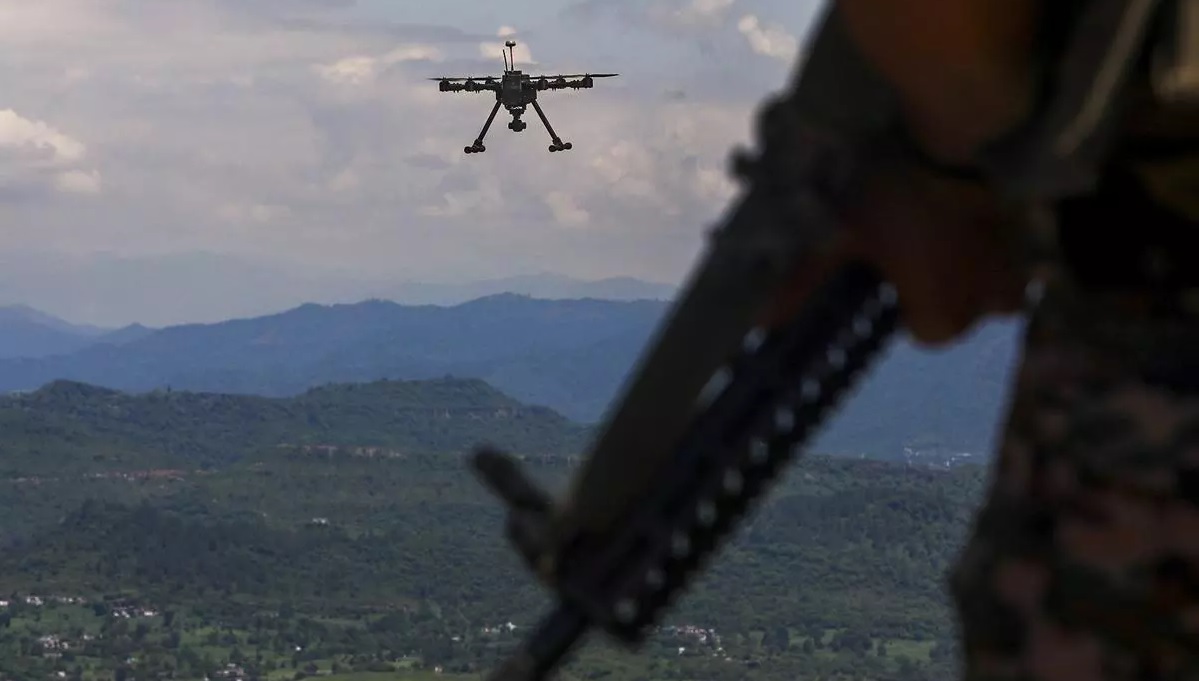 India's Defence Ministry Warns Against Chinese Parts in Military Drones Amid Security Concerns
India's Defence Ministry Warns Against Chinese Parts in Military Drones Amid Security Concerns
-
 Pakistan Announces 15% Increase in Defence Budget for 2024-25 Amid Economic Crisis
Pakistan Announces 15% Increase in Defence Budget for 2024-25 Amid Economic Crisis
-
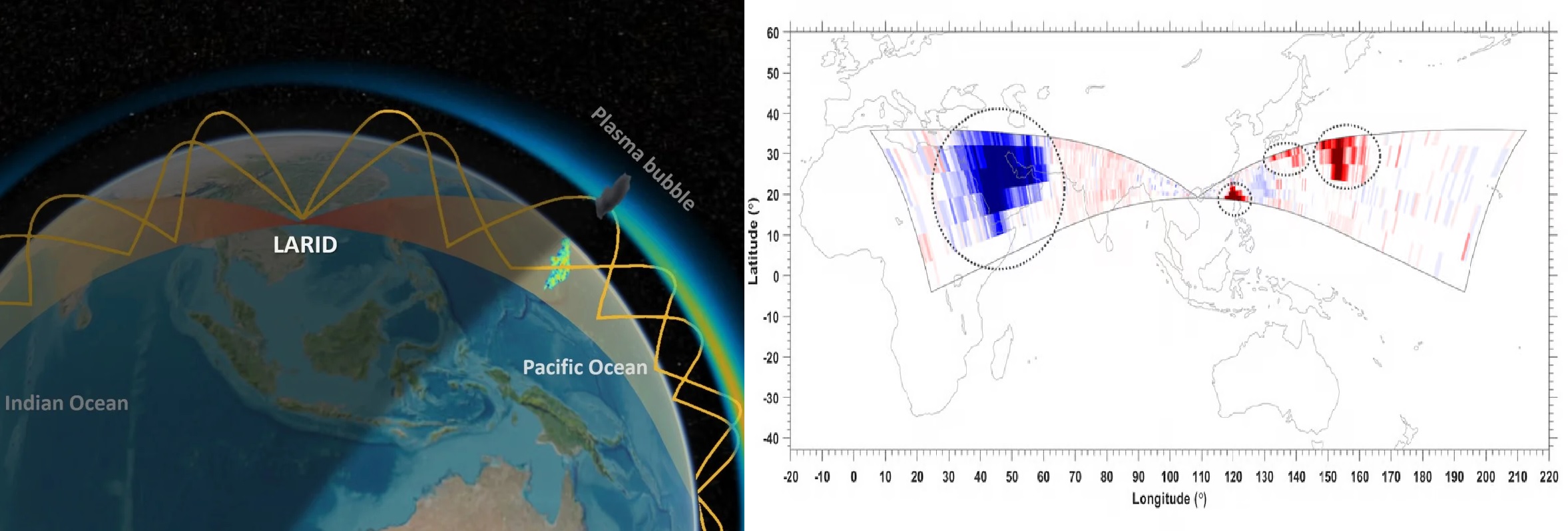 China’s Super Radar Detects Mysterious Plasma Bubble Over Giza Pyramids
China’s Super Radar Detects Mysterious Plasma Bubble Over Giza Pyramids
-
 India's Indigenous Kaveri Engine Program with New Focus on Thrust and Performance
India's Indigenous Kaveri Engine Program with New Focus on Thrust and Performance
-
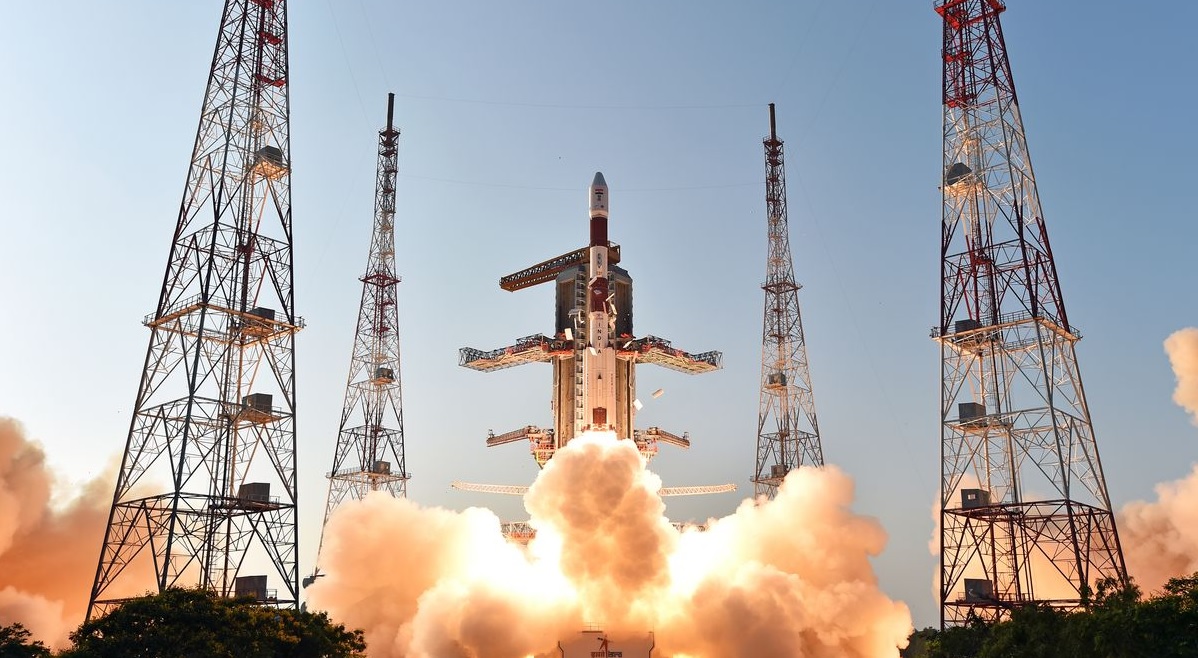 Isro Draws up Ambitious Plan for 2024, says will Launch at Least 12 Missions
Isro Draws up Ambitious Plan for 2024, says will Launch at Least 12 Missions
-
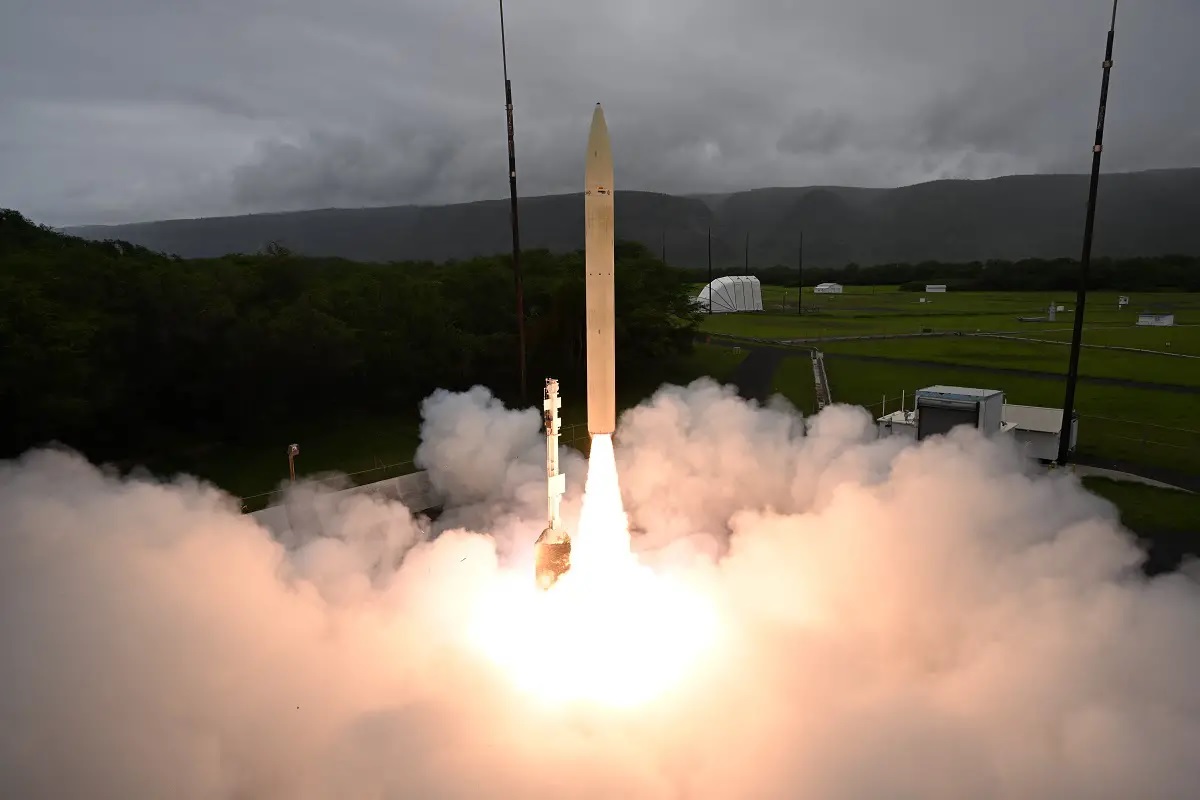 Successful Hypersonic Missile Test by U.S. Department of Defense
Successful Hypersonic Missile Test by U.S. Department of Defense
Top Trending in 4 Days
-
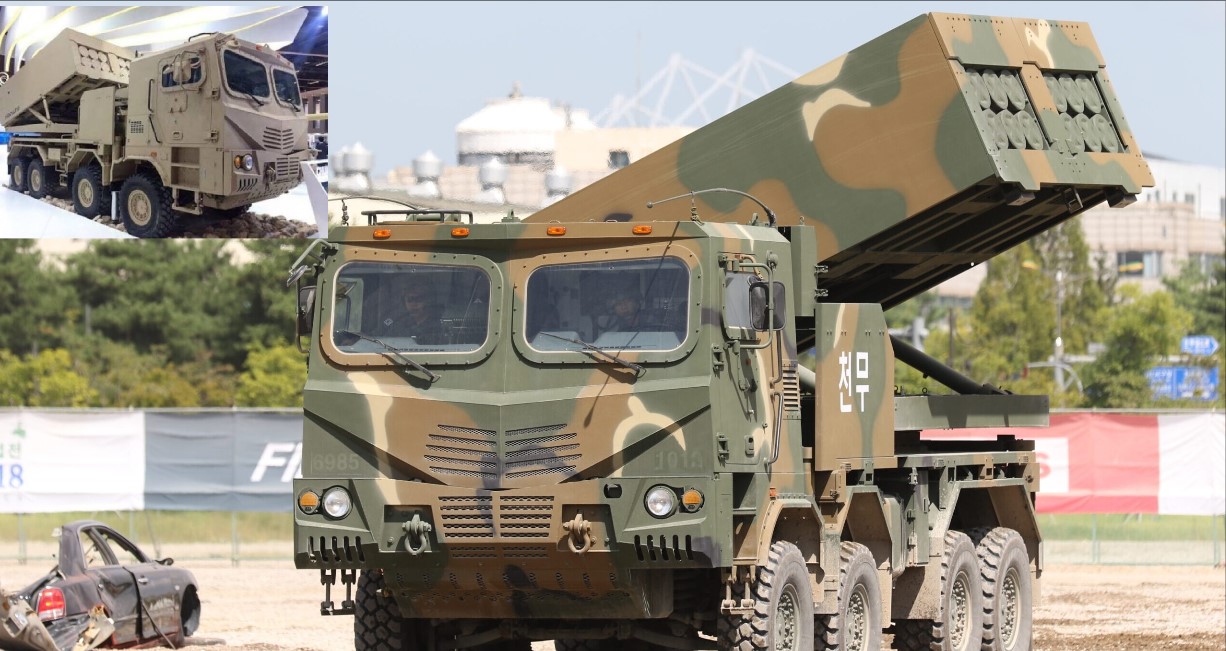 South Korea’s K239 Chunmoo Rocket Artillery Spotted in Saudi Arabia
South Korea’s K239 Chunmoo Rocket Artillery Spotted in Saudi Arabia
-
 Russia Launches Massive Missile and Drone Attacks on Ukraine's infrastructure
Russia Launches Massive Missile and Drone Attacks on Ukraine's infrastructure
-
 Peru to Acquire South Korea's K2 Black Panther Tanks
Peru to Acquire South Korea's K2 Black Panther Tanks
-
 Russia Reports Interception of 44 Ukrainian Drones Including 20 over Novgorod region
Russia Reports Interception of 44 Ukrainian Drones Including 20 over Novgorod region
-
 Advancing Space Tech for Defense: ICEYE Leads Finland's F-35 Industrial Participation Program
Advancing Space Tech for Defense: ICEYE Leads Finland's F-35 Industrial Participation Program
-
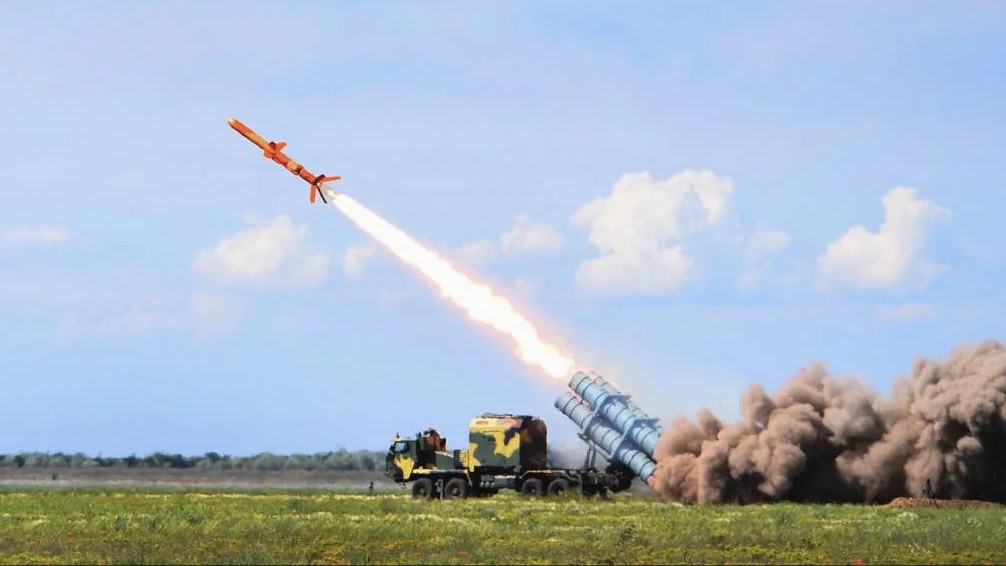 Ukraine Scales Up Neptune Missile Production: Over 100 Units Manufactured with Enhanced Range
Ukraine Scales Up Neptune Missile Production: Over 100 Units Manufactured with Enhanced Range
-
 Taiwan Strengthens Communication Resilience with LEO Satellites, Make War-Proof its communications networks
Taiwan Strengthens Communication Resilience with LEO Satellites, Make War-Proof its communications networks
-
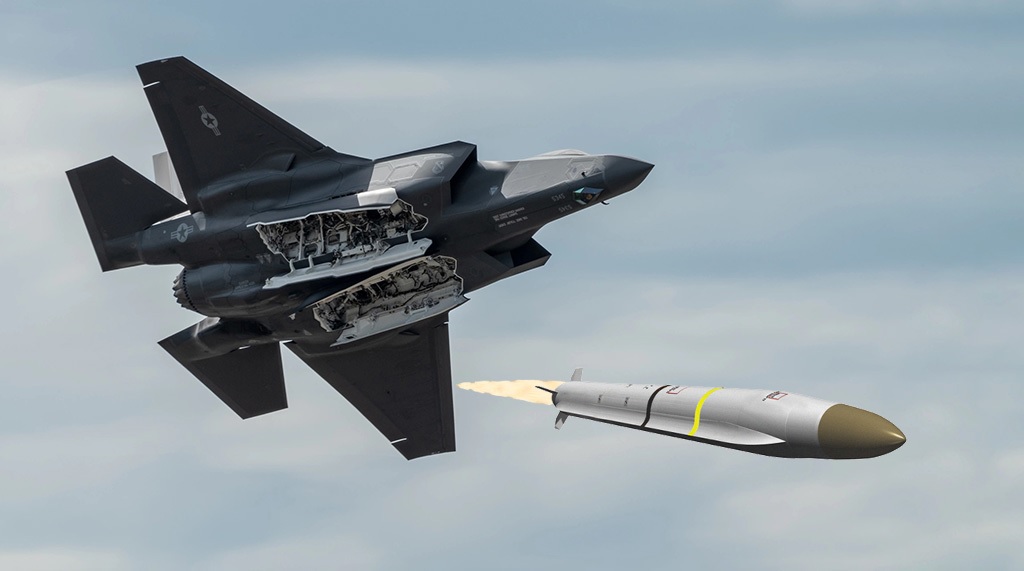 Northrop Grumman Delivers Advanced SiAW Missile for U.S. Air Force Testing
Northrop Grumman Delivers Advanced SiAW Missile for U.S. Air Force Testing
